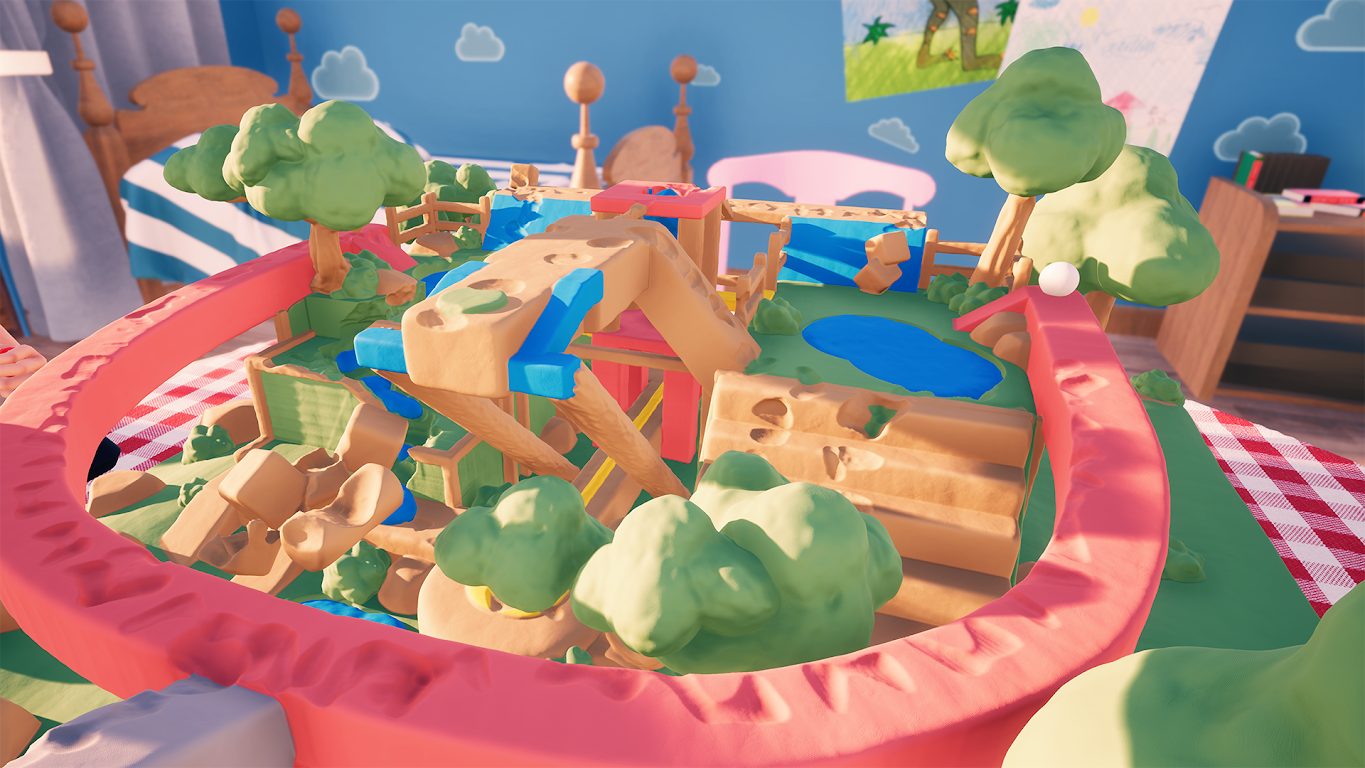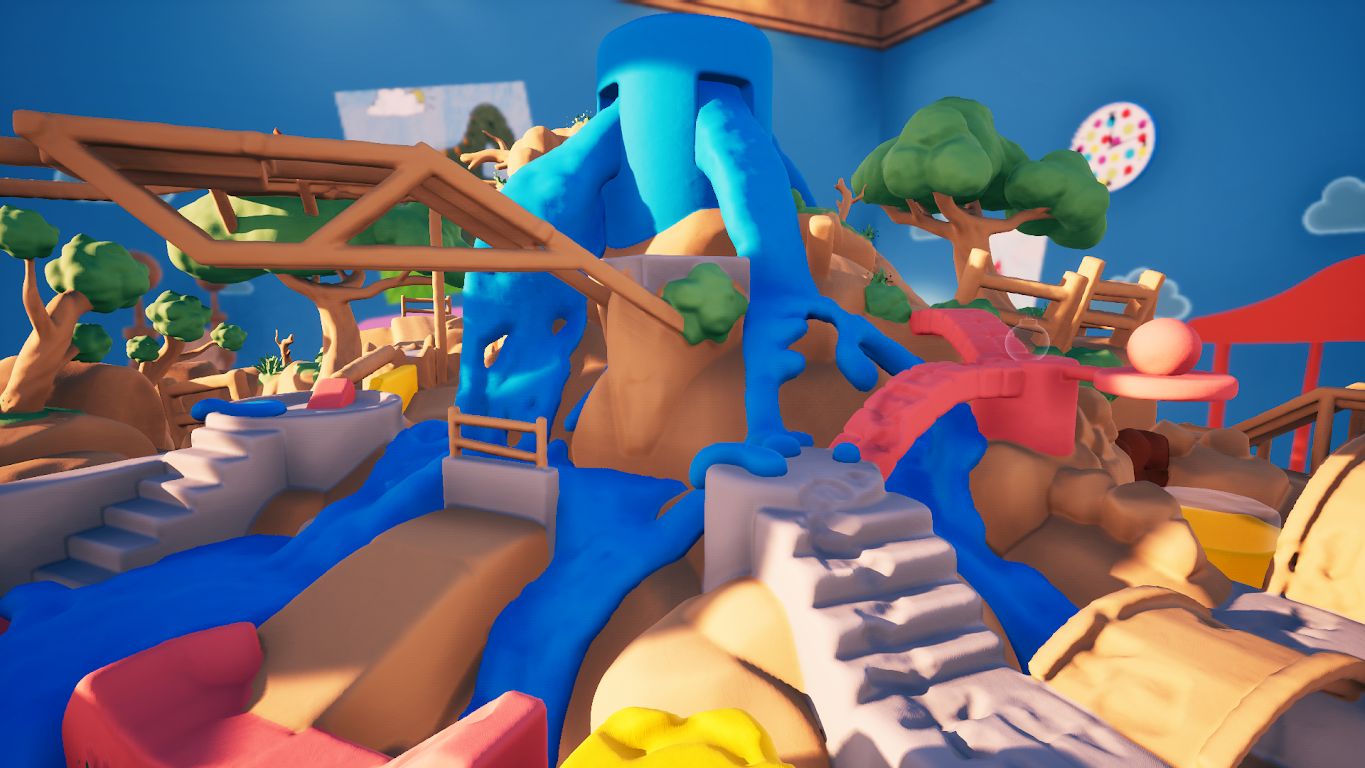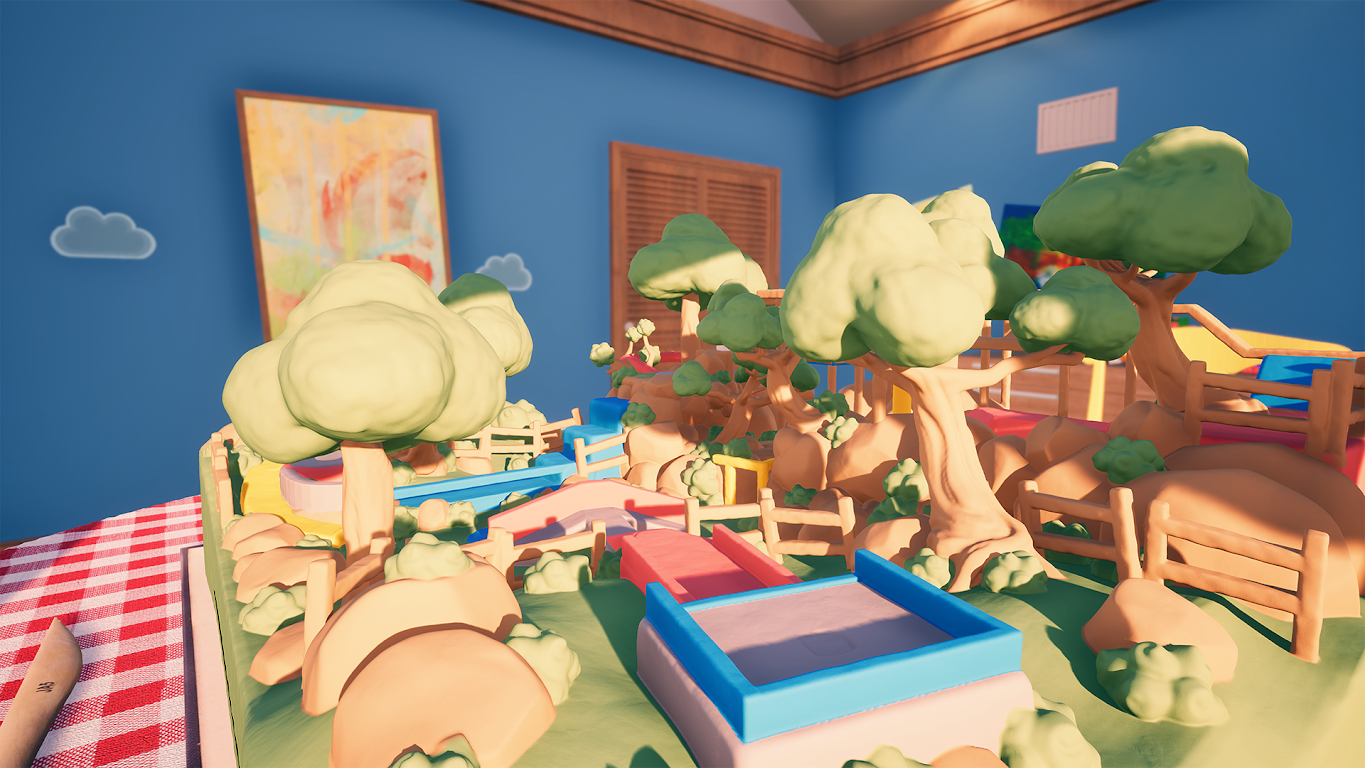Claybook is a game that takes place in a world made of clay, although it really looks more like Play-Doh. It’s a brightly coloured title that matches cute visuals with a friendly childish soundtrack to make the entire game a really joyful experience. With a wide-open sandbox mode, Claybook can give you a world of possibilities, as long as you’re creative enough to fight against the controls and actually build something.
Claybook is roughly divided into two areas. In the pre-made levels, you control a lump of clay in various shapes as you travel around the pre-sculpted world. You’ll ultimately destroy the majority of this charming world trying to achieve the goal set by the level or solve the puzzle. These areas are fun and creative. They really show off the fantastic physics system at work in Claybook.
Then there is creative mode. This mode gives you access to all the tools you need to create your own worlds with the same aesthetic and physics. It’s an expansive sandbox and a fantastic set of tools. However, it hasn’t exactly been optimized for the system.
Claybook is really well presented. The detail on the clay is lovely. No matter what shape your ball ends up taking, it maintains the splashes of colour from all of the clay that it has absorbed. Levels are creatively designed. You might actually find yourself controlling a weird Pixar-esque cartoon boy using a joystick at the side of the level. It can occasionally take you by surprise when you forget there’s a creepy child around the corner. It’s an odd detail, but his age might begin to explain why there is so much water and chocolate sitting around on a table full of toxic clay.
Pre-Made from Clay
 Claybook’s main game is essentially a demonstration of what you can build with the sandbox. It consists of only five worlds, each with four levels. Using some basic controls, you move a lump of clay around the world and change its shape. Changing shape is done both through buttons and by taking control of certain other pre-determined lumps.
Claybook’s main game is essentially a demonstration of what you can build with the sandbox. It consists of only five worlds, each with four levels. Using some basic controls, you move a lump of clay around the world and change its shape. Changing shape is done both through buttons and by taking control of certain other pre-determined lumps.
You can burn away at the clay in your surroundings to remake the landscape. This doesn’t increase the size of your playable clay, the displaced materials just vanish. Holding the trigger lets you create a copy of yourself and reverse your flow across the level. This is needed when you’re attempting intricate platforming while controlling a malleable doughnut-shaped lump of clay.
These are the only ways of interacting with the world around you. Your player character, the lump of clay, is pretty limited in its movements so you’ll have to get creative to solve the levels. Each puzzle is designed to have quite a few methods of completion.
Some of the more open-ended levels really inspire you to get creative. A personal favourite is those that require you to dig enough ditches to transport liquid from one area to another. This feels more like playing with sandcastles and moats than clay, but there’s still a sweetness to it.
The levels are generally very well designed, but there just isn’t enough of them. After a few stages, you’ll begin to see the same basic objectives repeat themselves, just in different looking areas. The differing surroundings mean you’re solving an entirely different puzzle, but it can become tedious. The levels that make you eat away at the random candy spread throughout them feel more like a repetitive slog than creative problem-solving. There are some exceptions, but the repetitive levels can become dull.
Claybook’s Sandbox

The main attraction in Claybook is the sandbox mode. From first launching it up, you’re going to notice how big it is. Not only does it allow you to make stages, but you can make and organize them into your own Claybooks.
You can make entire worlds of puzzles, many more than the small amount available in the base game. Judging by the number of tools on offer, you can probably make better and more fun puzzles than those bundled with the game as well.
If you have the time and patience, you can use these tools to create detailed and intricate puzzle stages. They can be both enjoyable to build and a lot of fun to play, but it is time-consuming. Claybook is a fantastic sandbox for creative people to play with, it’ll particularly appeal to those who enjoy Minecraft or other creativity centered titles. However, it doesn’t work fantastically on the Switch.
Fighting The Controls

It’s not the fault of Claybook, but the controller makes the whole process of designing a level a bit fiddly. These types of games just work better with a mouse. Creation of levels is still very possible on the Switch, but it is a lot harder. Players willing to spend more time with the controls will be able to master to them, but it’s a lot harder to create something worthwhile.
To its credit, Claybook does all it can to make designing a level with twin sticks as fun as possible. However, there are some Switch specific controls that could have made everything a lot easier. Motion controls could have lightened the burden. Using the touchscreen when the Switch is not docked would have made this level creator much more enjoyable, similar to how Civilization VI translated its mouse controls to the Switch. It’s a shame that this one of the few Indie Games that don’t work as well on Switch.
For the devoted, sandbox mode should be an absolute joy. It’ll take a bit of extra time to master those controls. However, if you’re spending hours slaving away on a design then the portability of the Switch is going to become a factor that might outweigh this difficulty. There’s still a world of fun to be had in sandbox mode. That is if you commit to mastering the controls first.

Pros
- Fun gameplay
- Polished visuals
- Cheery music
- Extensive sandbox mode
- An optimistic experience
Cons
- Difficult controls in sandbox mode
- Not enough pre-designed levels
- Puzzles become tedious
Conclusion
Claybook is a bright and fun game that will leave you smiling. However, the Switch might not be the best way to experience it. Really devoted players are going to find an endless sandbox of possibilities. It is a fantastic title and a must-play for anyone who enjoys building in other sandboxes. However, Claybook would have benefited from more content and better use of the console’s features to get around the problem with controls.



